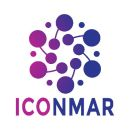Speaker
Description
Membrane distillation (MD) represents a promising desalination technology with significant potential to mitigate the global water crisis. The development of membranes with optimal nanomaterial properties is critical for membrane distillation (MD) technology for desalination. In this work, the experiments that were required for the fabrication of the membranes were minimized by introducing a phase inversion process where a statistical method based on Box-Behnken design (BBD) was used. The fabrication conditions of the hydrophobic membrane were selected as independent parameters, and the model response was given by the water flux. This approach minimizes the requisite experimental trials by modeling key fabrication parameters as independent variables and quantifying their influence on membrane performance, assessed through permeate flux. Using direct contact membrane distillation (DCMD), carbon nanomaterials (CNMs) were embedded in polyvinylidene fluoride (PVDF) membrane to increase its hydrophobicity and, consequently, enhance its performance in seawater desalination. The preparation of the membrane was carried out using the phase inversion method with different CNM loadings (i.e., 0.75, 0.50 and 0.25 wt%) embedded with different concentrations (i.e., 17, 15 and 13 wt%) of PVDF/N-methyl-2-pyrrolidone (NMP) solvent. Furthermore, the membrane was synthesized in three distinct thicknesses: 50, 100, and 150 μm. Field emission scanning electron microscopy (FESEM) and high-resolution transmission electron microscopy (HTEM) were used to study the electron-microscopic properties of the prepared CNMs. Thermogravimetric analysis (TGA), mechanical characteristics, and contact angle were used to characterize the membranes. The hydrophobicity of the composite membrane surface is greatly increased by the integration of superhydrophobic CNMs, which is reflected by physiochemical properties of membrane, surface morphology and mechanical characteristics. The developed model and all suggested parameters have a significant impact on the flux, as demonstrated by the accuracy measurements derived from the analysis of variance (ANOVA). Certainly. Carbon nanomaterials (CNMs) proved to be the dominant factor, interacting with membrane thickness and polymer concentration to significantly influence the permeate flux. The best preparation parameters yielded the highest flux of roughly 107 kg/m2h, which was achieved with 0.50 weight percent of CNMs loading, 15 weight percent PVDF concentration, and 100 μm casting knife thickness.
Keywords: Carbon nanomaterials; Direct contact membrane distillation, Super-hydrophobic, Desalination; Membrane.

